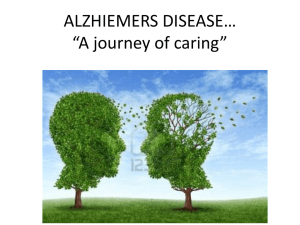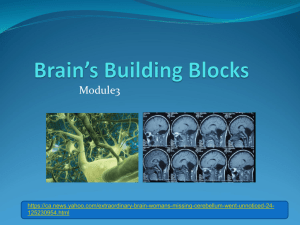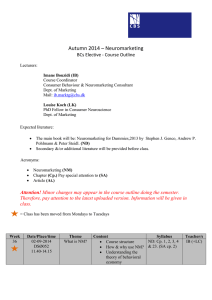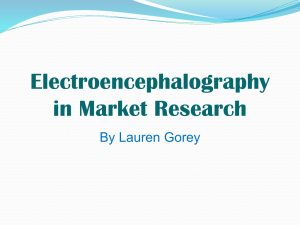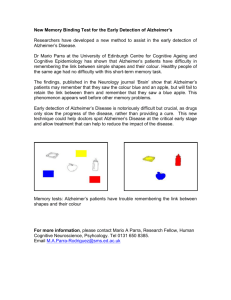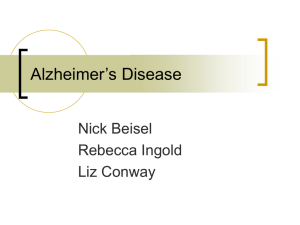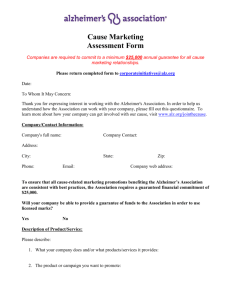The use of technology in investigating cognitive
advertisement
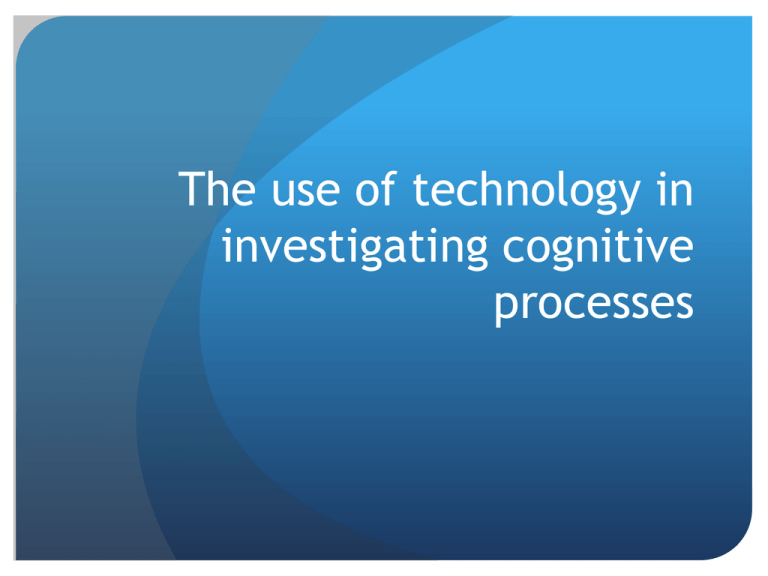
The use of technology in investigating cognitive processes What we’ll be doing 3 studies Mosconi et al (2005) Clinton Kilts (2003) Read Montague You can also include Clive Wearing and HM in this topic ALZHEIMERS DISEASE SO, WHAT EXACTLY IS ALZHEIMERS? Who does it affect? Can it be cured? PET scans Cast your mind back to the Biological Level of Analysis What is a PET scan? What is it used for ? How does it work? (Remember Beatrice and Mann Chyi’s presentation?) Visit this website for an overview of how brain imaging is used in dementia research. http://www.alzheimers.org.uk/site/scripts/documents_ info.php?categoryID=200299&documentID=311&pageNu mber=3 ALzheimers Dr Lisa Mosconi (read p86) PET scans can detect brain tumours or memory disorders like Alzheimer’s. It identifies cellular level metabolic changes in an organ or tissue. Alzheimer’s New technology has enabled PET scanning to pick up abnormalities related to Alzheimer’s even before the patient has realized that there is something wrong. New York University School of Medicine Developed a brain-scan-based computer programme that quickly and accurately measures metabolic activity in the hippocampus. Alzheimer’s In the early stages of Alzheimer’s, PET scans (in collaboration with the computer programme) show that there is a reduction in brain metabolism in the hippocampus. Alzheimer’s longitudinal study Mosconi and colleagues (2005) In a longitudinal study at NYU school of medicine 53 normal, healthy participants (9-24 years) People with reduced metabolism in the hippocampus were more likely to go on to develop Alzheimer’s disease. Could you tell the difference between Coca Cola and Pepsi in a blind taste test? What is neuromarketing? Read ‘How the brain reveals why we buy’ and answer these questions. Make detailed notes. 1. What is neuromarketing? 2. What were the findings of Kilt’s study? 3. What is the Pepsi Paradox? 4. What did Read Montague conclude after his experiments? 5. How was brain imaging important in both of these studies? Now read p86 & 87 of the Course Companion and write brief summaries of the 3 studies. Write a list of the strengths and weaknesses of the 3 studies. Do you think Neuromarketing will become a big industry? Why or why not? Stop Neuromarketing Some people aren’t too keen on the idea of neuromarketing.
